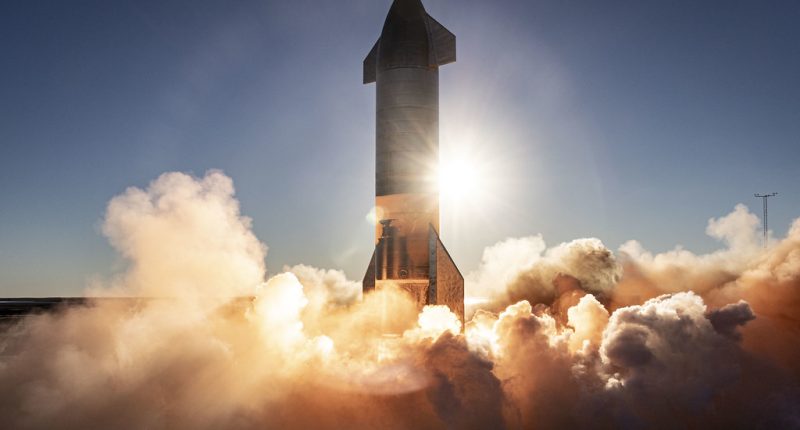SpaceX has been gearing up for the first-ever orbital test flight of its Starship vehicle for quite some time. Now, CEO Elon Musk has announced that the launch test of the Super Heavy rocket is likely to take place later this month.
This comes after SpaceX engineers completed a final “flight readiness review” for the Super Heavy and Starship launch system and declared that the vehicle was ready to take to the skies. If all goes according to plan, the orbital test flight could occur as soon as the end of next week.
The exact date of the launch is not known, but Musk took to Twitter to announce that the Starship was ready for launch and it was only “awaiting regulatory approval” before launching. According to a report by the Operation Plans Advisory of the Federal Aviation Administration, the launch will occur on April 17 from SpaceX’s launch facility, Starbase, in Boca Chica, Texas. April 18 to 22 have been listed as backup launch dates. SpaceX can get the green signal from the FAA and obtain the launch license upon the completion of a federal environmental compliance review.
Starship is ready for launch 🚀
Awaiting regulatory approval
— Elon Musk (@elonmusk) April 9, 2023
This development comes after Musk said that the launch could happen sometime this week. During this flight test, the Super Heavy rocket is likely to fire for a couple of minutes before separating from the upper stage and descending into the Gulf of Mexico. The second stage, once it reaches orbital velocity, will then complete a full orbit of Earth before re-entering the atmosphere and splashing down off the coast of Hawaii. Based on the performance of the vehicle, it will be determined if SpaceX is ready to attempt a land-based landing anytime soon. No payloads will be carried during the duration of the test.
A successful orbital test flight will be all the more significant since it has the potential to revolutionize space travel, and its success will inspire a new generation of space enthusiasts and explorers. With its ability to transport people and cargo to the moon and eventually Mars, the Starship represents a giant leap forward in humanity’s journey to explore and colonize space.
In addition to its scientific and exploratory potential, the Starship launch also has significant commercial implications. As space travel becomes more accessible and cost-effective, we can expect to see a boom in the space tourism industry, as well as increased opportunities for space-based research and development.
Today, the Starship is envisioned to be a fully reusable transportation system that can carry astronauts and cargo to the orbit of the Earth, the moon, Mars, and beyond. Standing at 394 feet (120m) tall, the Starship is easily the largest and most powerful rocket that SpaceX has brought out. The Starship rocket sits atop a “Super Heavy” first-stage booster with 33 rocket engines. However, it does seem that Musk is not satisfied with the current size – he wrote on Twitter that the Starship will “get bigger” and “probably stretch by another 10m or so.”
Will get bigger. Ship will probably stretch by another 10m or so.
— Elon Musk (@elonmusk) April 9, 2023





